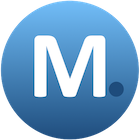Source: Maritime New Zealand
Education resources and guidance are key parts of implementing the Approved Code of Practice for Loading and Unloading Cargo at Ports and on Ships (ACOP).
We’re making excellent progress on the first e-learning modules. These are about risk management from workers’ perspectives, and include:
- understanding risk management in the workplace
- understanding your role in risk management
- applying risk management in the workplace.
‘Lights, camera, action!’
We had a fantastic day supporting an external camera crew filming port workers at CentrePort and hearing their experiences of managing workplace risks and hazards. These videos will be included in the e-learning modules for risk management.
We owe a big thank you to stevedoring company, C3, and CentrePort for supporting this initiative, and to the workers who were willing to share their stories and put themselves in front of the camera (not an easy thing to do!).
We’ll be sharing and testing prototypes of the e-learning modules with the ‘Developer Group’ (representatives from the ports, stevedore companies, and unions) later this year, with the aim of having the modules available in early 2026.
Health and Safety Playing Cards
Feedback from the two Education Tools workshops in 2024 supported the idea of using playing cards as a supplementary education resource that relates well to port workers. The Developer Group provided us with insights into how workers like to learn and have information presented to them. This included resources being visual with simple, clear content that could be easily accessed, practical, and fun to use.
The playing cards we’re developing focus on the critical risks associated with working on a port identified in the Port Sector Insights Picture. Each card includes the relevant ‘critical risk’ icon that has been endorsed by the Port Industry Association’s Health and Safety sub-committee.
The cards will be reviewed by the Developer Group before being printed and provided to each port to complement other education and guidance resources under development.
Co-designing guidance documents
We’ve also started to develop two pieces of guidance to support understanding of the ACOP:
- managing hazardous atmospheres in confined spaces
- working at height on ships.
These topics were decided on as a priority with the industry and endorsed by the Port Health and Safety Leadership Group. Criteria considered when choosing topics depended on:
- what the Port Sector Insights Picture and Action Plan confirmed were a critical risk or key driver of harm
- Maritime NZ frontline insights of critical risks or drivers of harm
- where the sector has observed urgent matters requiring resolution
- the existing guidance materials or education resources already available
- current priorities on the work programme.
To make sure we had the right focus and content we held two workshops with a large number of people from port companies, stevedore firms, and unions. As with the ACOP itself, this was a co-design process which we intend to continue to use as we develop more guidance.
We hope to have the guidance ready to publish in early 2026.


